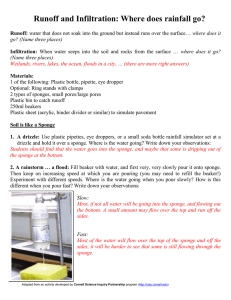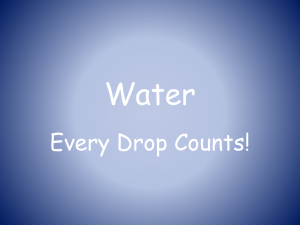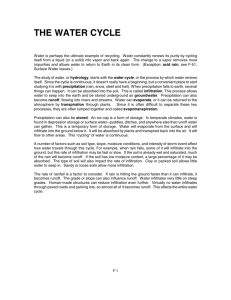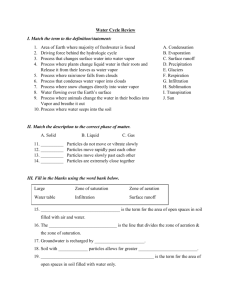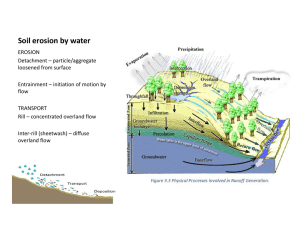Runoff and Infiltration: Where does rainfall go?
advertisement
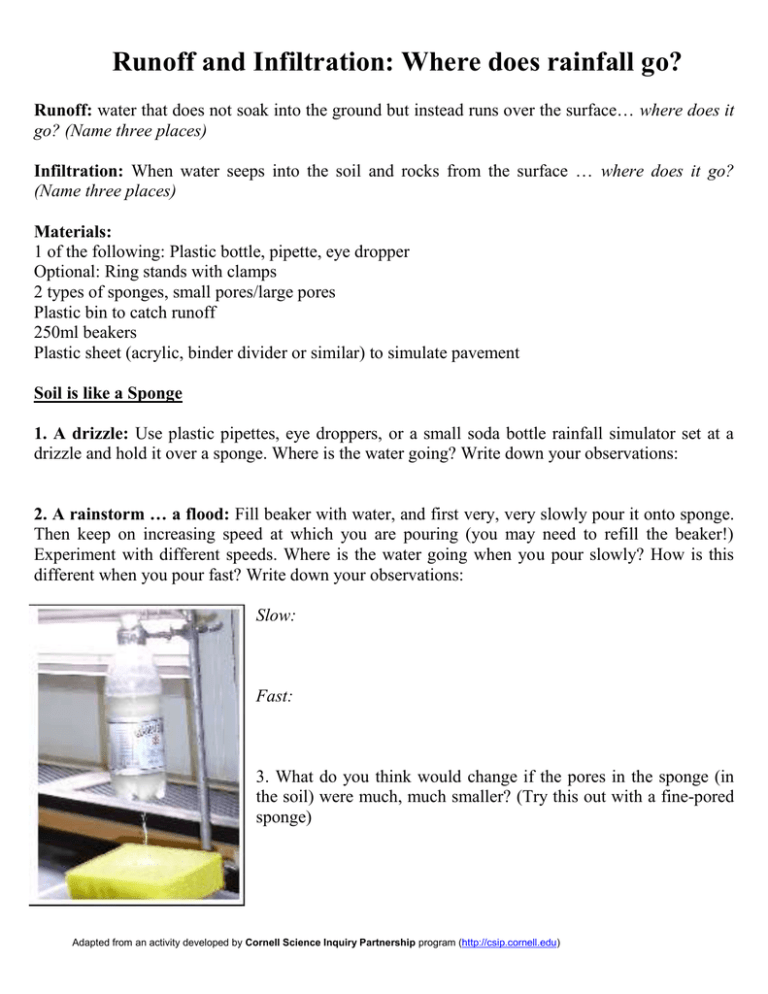
Runoff and Infiltration: Where does rainfall go? Runoff: water that does not soak into the ground but instead runs over the surface… where does it go? (Name three places) Infiltration: When water seeps into the soil and rocks from the surface … where does it go? (Name three places) Materials: 1 of the following: Plastic bottle, pipette, eye dropper Optional: Ring stands with clamps 2 types of sponges, small pores/large pores Plastic bin to catch runoff 250ml beakers Plastic sheet (acrylic, binder divider or similar) to simulate pavement Soil is like a Sponge 1. A drizzle: Use plastic pipettes, eye droppers, or a small soda bottle rainfall simulator set at a drizzle and hold it over a sponge. Where is the water going? Write down your observations: 2. A rainstorm … a flood: Fill beaker with water, and first very, very slowly pour it onto sponge. Then keep on increasing speed at which you are pouring (you may need to refill the beaker!) Experiment with different speeds. Where is the water going when you pour slowly? How is this different when you pour fast? Write down your observations: Slow: Fast: 3. What do you think would change if the pores in the sponge (in the soil) were much, much smaller? (Try this out with a fine-pored sponge) Adapted from an activity developed by Cornell Science Inquiry Partnership program (http://csip.cornell.edu) 4. Explain the differences in runoff and infiltration you have observed so far in your own words – how does the sponge show what happens when rain falls on soil? 5. Paving a road: Cover the sponge with plastic, and pour water onto it again. Where is the water going? Write down your observations: How does paving over the soil affect runoff and infiltration? 6. In what ways are people using land differently now than 200 years ago? Do you think there was more or less runoff 200 years ago? Why? 7. What effects do you think runoff can have on the environment? How could runoff play a part in pollution? How would it affect streams, rivers and lakes? How would it affect the groundwater? Adapted from an activity developed by Cornell Science Inquiry Partnership program (http://csip.cornell.edu)
